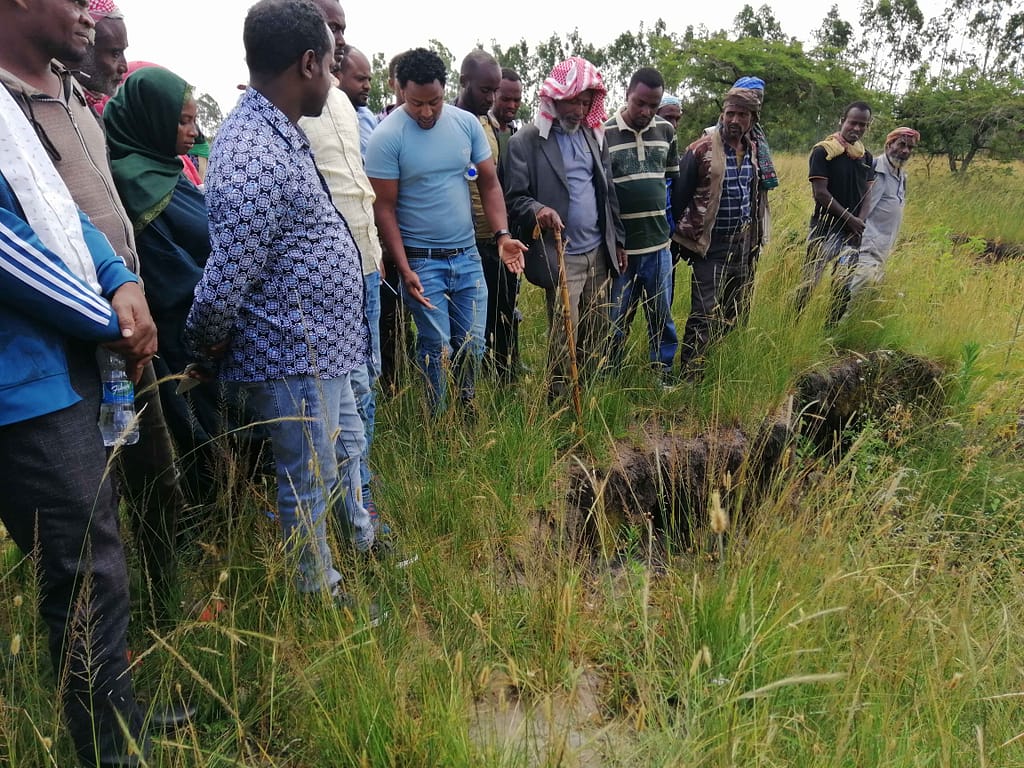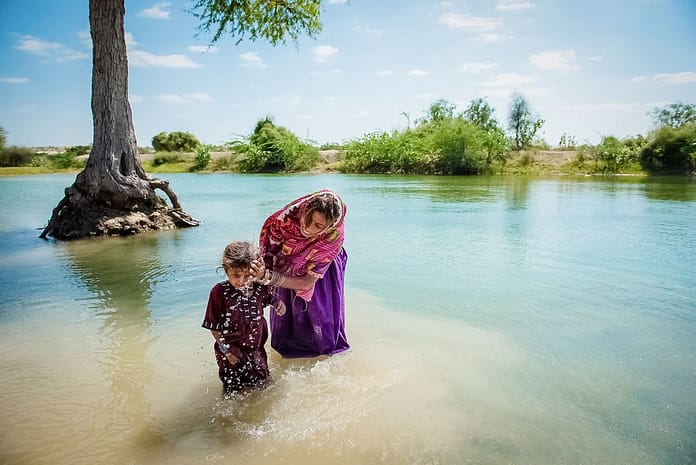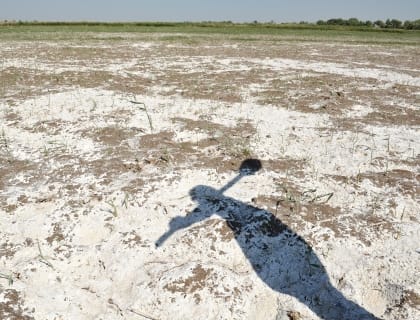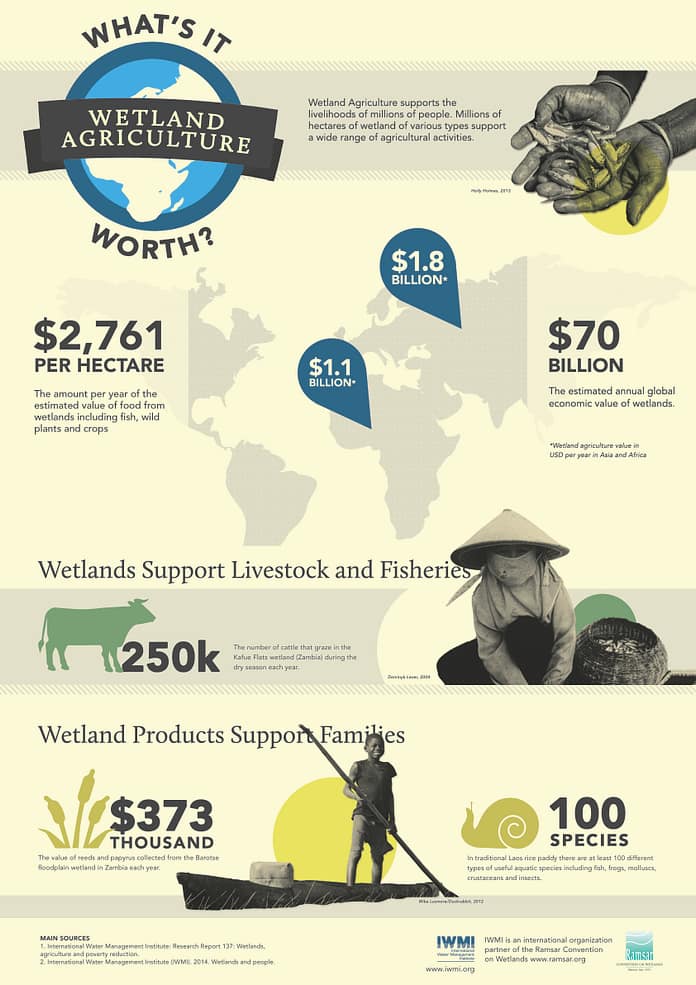Land degradation impacts livelihoods and ecosystems globally by reducing food production, water purification and biodiversity levels. According to the UN Convention to Combat Desertification, as of 2022, up to 40% of the planet’s land has been degraded, which threatens more than half of global GDP, an amount equivalent to USD 44 trillion. However, this degradation is not happening uniformly. Sub-Saharan Africa, Western and Central Asia, Latin America and the Caribbean all experience faster rates of land degradation than the global average. Since 2015, sub-Saharan Africa alone has lost more than 163 million hectares of land.
The International Water Management Insitute (IWMI) in collaboration with international and national partners has been working in Ethiopia to counter the impact of land degradation on local farmers and communities. Through the “Reducing land degradation and carbon loss in Ethiopia’s soils” (RALENTIR) project, IWMI aimed to develop and apply frameworks for the analysis of equity within the case study areas. This was in order to design specific interventions to demonstrate and train local farmers in simple measures to address gully formation through a range of methods. The project explored the impact of land degradation interventions on participants’ attitudes, behavior and livelihoods.
Implications of land use change in the Lake Abaya Chamo sub-basin
The Abaya-Chamo sub-basin in southern Ethiopia has experienced significant land degradation. IWMI researchers sought to inform sustainable landscape management practices by mapping land use and land cover changes in the region over the past four decades. The study specifically examined the Aba-Bora and Guder watersheds, both of which have been highly degraded. From analysis of pre-existing biophysical and socio-economic datasets as well as newly collected data from the region, they found that the loss of croplands and grazing lands significantly affected ecosystem services, even when plantations and shrublands increased. Over the course of 41 years, these changes led to a loss of ecosystem service values of USD 1.6 million in the Aba-Bora watershed and USD 24.4 million in Guder.
A significant land degradation issue identified during the study was gully erosion, severe soil erosion caused by flowing surface water that carves open unstable channels into the ground. Although it is an issue worldwide, gully erosion most severely impacts African countries due to declining and low vegetation cover creating increased overland flow over unstable soils. It can be caused by a myriad of factors including environmental ones such as drought or concentrated runoff or anthropogenic factors such as land use change, overgrazing, deforestation, and repeated cultivation. The consequences of gully erosion are mostly experienced by rural communities, in particular, poorer households who derive their income from the land.
Gully erosion interventions in southern Ethiopia
Gully rehabilitation measures in downstream areas could be an important option to reduce the expansion of big gullies and conserve cropland and grazing areas. In another study that was part of the RALENTIR project, researchers from IWMI, University of Aberdeen, Hawassa University and other national university and research systems worked with communities in southern Ethiopia to explore low-cost gully rehabilitation measures to reduce soil loss and upward expansion of gully heads. The study used three gully treatments: riprap, a technique in which large rocks are placed along the edge of water to prevent erosion, grass planting, and a combination of grass planting and check-dam integration. Over the course of 26 months, these practices all led to a reduction in the expansion of the gully head.

Farmer participation in the investigation of gully mitigation strategies supported the selection of the most effective, acceptable and practical interventions from the perspective of local communities. There was clear evidence of greater efforts made in undertaking work to reduce gullies in areas where mitigation measures had been implemented, suggesting on-farm experiments and field day demonstrations empower farmers to act despite their pessimism about their capacity to do so. Effective policy development, therefore, should focus on small-scale, cost-effective interventions rather than over-engineered systems that are not accessible to local communities.
Land degradation neutrality in Ethiopia
IWMI research found that as a whole over the past 15 years in Ethiopia, degraded land has decreased by 6% while stable areas have increased by 7%. These results indicate that sustainable land management can have a positive impact on soil quality. However, land degradation trajectories, extent and trends can vary significantly between agroecological zones.
Wolde Mekuria, Senior Researcher at IWMI said, “The findings of the studies demonstrated that engaging local communities is key to the sustainability of land and water management, fostering ownership and commitment. Regular monitoring, evaluation, and adaptive management are crucial to ensure progress and adjustments. Moving forward, continuing to strengthen policies and governance that support local communities will be essential for broader implementation.” Further research will be necessary to identify factors that make land management practices successful and develop context-based solutions that enhance positive impacts of restoration efforts.




